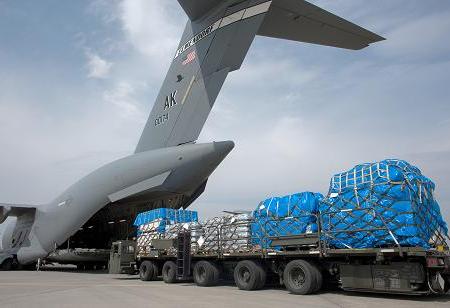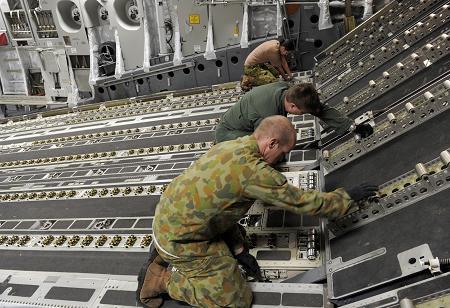Boeing's C-17 Globemaster III has played a crucial role in the relief efforts that followed last month's earthquake and tsunami in north-eastern Japan.
Working with a fleet of other aircraft, notably the Lockheed Martin MC-130H Combat Talon II combat tanker, C-17s from the US Air Force and the Royal Australian Air Force have been prominent in the relief effort.
 |
|---|
© USAF |
The day after the disaster, two C-17s were sent to Japan from US bases, one from Elmendorf-Richardson AFB in Alaska and another from Hickam AFB, Hawaii.
On 13 March the first aircraft reached Misawa air base, 200km (125 miles) north of the devastated eastern city of Sendai. Sendai's airport grabbed world attention on 11 March when aerial footage showed a wall of water sweeping trees, cars and light aircraft along its apron and runway.
While the C-17s flew Japan self-defence force personnel into airfields on the periphery of the disaster zone, members of the USAF's 320th special tactics squadron worked with the Japanese service to make Sendai airport ready for fixed-wing operations. The 320th's role is to establish drop and landing zones, combat medical care and evacuation, as well as combat search and rescue, says the USAF.
 |
|---|
© USAF |
The first USAF C-17 landed at Sendai on 20 March, just eight days after the disaster, carrying 40,900kg (90,000lb) of humanitarian aid. This was soon followed by three more USAF C-17s, each carrying over 45,000kg of urgent aid, including blankets, food, water and medical supplies.
Within days of the crisis, an RAAF C-17 flew to Japan with Australia's 70-member urban search and rescue team and their equipment, landing at Yokota air base in western Tokyo.
 |
|---|
© USAF |
Over 12 days in late March, three RAAF C-17s made 31 landings at Japanese airfields delivering over 450,000kg of cargo to the disaster area. Equipment included pumps to help douse the damaged Fukushima nuclear powerplant, food and water, vehicles, and personnel and equipment of the Japanese ground self-defence force's 15th brigade.
Wg Cdr David Howard, who led the RAAF relief contingent, says: "The C-17 enabled us to move significant amounts of cargo between the major ports, including ones that had been recovered from the debris, in a fairly short space of time, getting the humanitarian assistance and the specialists to the places they need to be to help the Japanese people as quickly as possible."
Aero Logic, the DHL-Lufthansa Cargo joint venture, has donated a cargo flight to support the European Union's disaster relief effort. Carrying 30t of goods from Hungary, Slovakia and Sweden, Aero Logic's Boeing 777 Freighter departed Frankfurt on 4 April, arriving in Tokyo two days later.
Source: Flight International



















